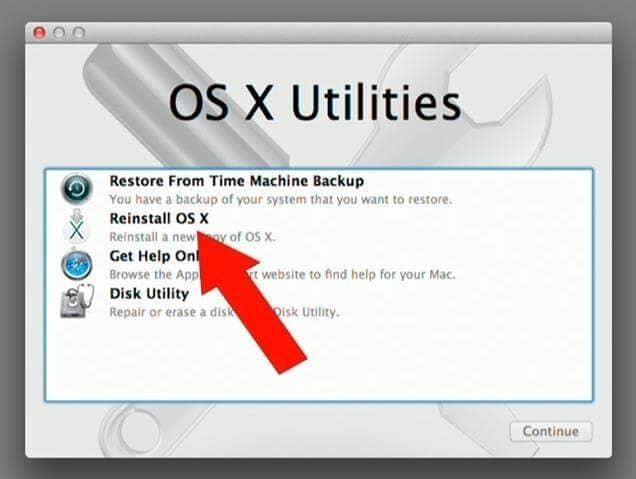

- HOW CAN I DOWNLOAD OSX FOR MY NEW HD MAC OS X
- HOW CAN I DOWNLOAD OSX FOR MY NEW HD INSTALL
- HOW CAN I DOWNLOAD OSX FOR MY NEW HD ARCHIVE
- HOW CAN I DOWNLOAD OSX FOR MY NEW HD SOFTWARE
- HOW CAN I DOWNLOAD OSX FOR MY NEW HD MAC
HOW CAN I DOWNLOAD OSX FOR MY NEW HD INSTALL
Read the INSTALL file for further instructions. This file is only needed if you want to join the development of the GUI (see also Mac-GUI repository), it is not intended for regular users. Sources for the R.app GUI 1.76 for macOS.
HOW CAN I DOWNLOAD OSX FOR MY NEW HD MAC
News features and changes in the R.app Mac GUI
HOW CAN I DOWNLOAD OSX FOR MY NEW HD SOFTWARE
Any external libraries and tools are expected to live in /opt/R/arm64 to not conflict with Intel-based software and this build will not use /usr/local to avoid such conflicts. If you wish to compile R packages from sources, you may need to download GNU Fortran for arm64 from. This release uses Xcode 12.4 and experimental GNU Fortran 11 arm64 fork. Always re-install XQuartz when upgrading your macOS to a new major version. Note: the use of X11 (including tcltk) requires XQuartz. Important: this version does NOT work on older Intel-based Macs. R 4.1.1 binary for macOS 11 ( Big Sur) and higher, Apple silicon arm64 build, signed and notarized package.Ĭontains R 4.1.1 framework, R.app GUI 1.77 for Apple silicon Macs (M1 and higher), Tcl/Tk 8.6.11 X11 libraries and Texinfo 6.7. If you wish to compile R packages from sources, you may need to download GNU Fortran 8.2 - see the tools directory. Important: this release uses Xcode 12.4 and GNU Fortran 8.2. For native Apple silicon arm64 binary see below. This release supports Intel Macs, but it is also known to work using Rosetta2 on M1-based Macs. Note: the use of X11 (including tcltk) requires XQuartz to be installed since it is no longer part of OS X. The latter two components are optional and can be ommitted when choosing "custom install", they are only needed if you want to use the tcltk R package or build package documentation from sources. R 4.1.1 binary for macOS 10.13 ( High Sierra) and higher, Intel 64-bit build, signed and notarized package.Ĭontains R 4.1.1 framework, R.app GUI 1.77 in 64-bit for Intel Macs, Tcl/Tk 8.6.6 X11 libraries and Texinfo 6.7. Pkgutil -check-signature R-4.1.1.pkg Latest release: R-4.1.1.pkg (notarized and signed)
HOW CAN I DOWNLOAD OSX FOR MY NEW HD MAC OS X
On Mac OS X 10.7 and later you can also validate the signature using In the Terminal application to print the SHA1 checksum for the R-4.1.1.pkg image. Please check the SHA1 checksum of the downloaded image to ensure that it has not been tampered with or corrupted during the mirroring process.
HOW CAN I DOWNLOAD OSX FOR MY NEW HD ARCHIVE
Package binaries for R versions older than 3.2.0 are only available from the CRAN archive so users of such versions should adjust the CRAN mirror setting ( ) accordingly. Note: Although we take precautions when assembling binaries, please use the normal precautions with downloaded executables. Releases for old Mac OS X systems (through Mac OS X 10.5) and PowerPC Macs can be found in the old directory.

To the extent that it’s possible to do without final hardware in-hand, we’ll cover the new macOS features that will be native to Apple Silicon Macs and outline how the software side of the transition will go.This directory contains binaries for a base distribution and packages to run on macOS. We’ll cover the operating system’s new look and new features-the things that any Big Sur Mac will be able to do, regardless of whether it’s running on an Intel or an Apple Silicon Mac. We won’t be making any major changes to how we approach this review, either. This ought to be a smooth transition, most of the time. It may even be a bit less disruptive than Catalina was. Almost everything will still work the same way-or, at least, Big Sur doesn’t break most software any more than older macOS 10 updates did. Early betas were even labeled as macOS 10.16, and Big Sur can still identify itself as version 10.16 to some older software in order to preserve compatibility.

Further Reading macOS 10.15 Catalina: The Ars Technica reviewīut unlike the jump from Mac OS 9 to Mac OS X, where Apple swept away almost every aspect of its previous operating system and built a new one from the foundation up, macOS 11 is still fundamentally macOS 10.


 0 kommentar(er)
0 kommentar(er)
